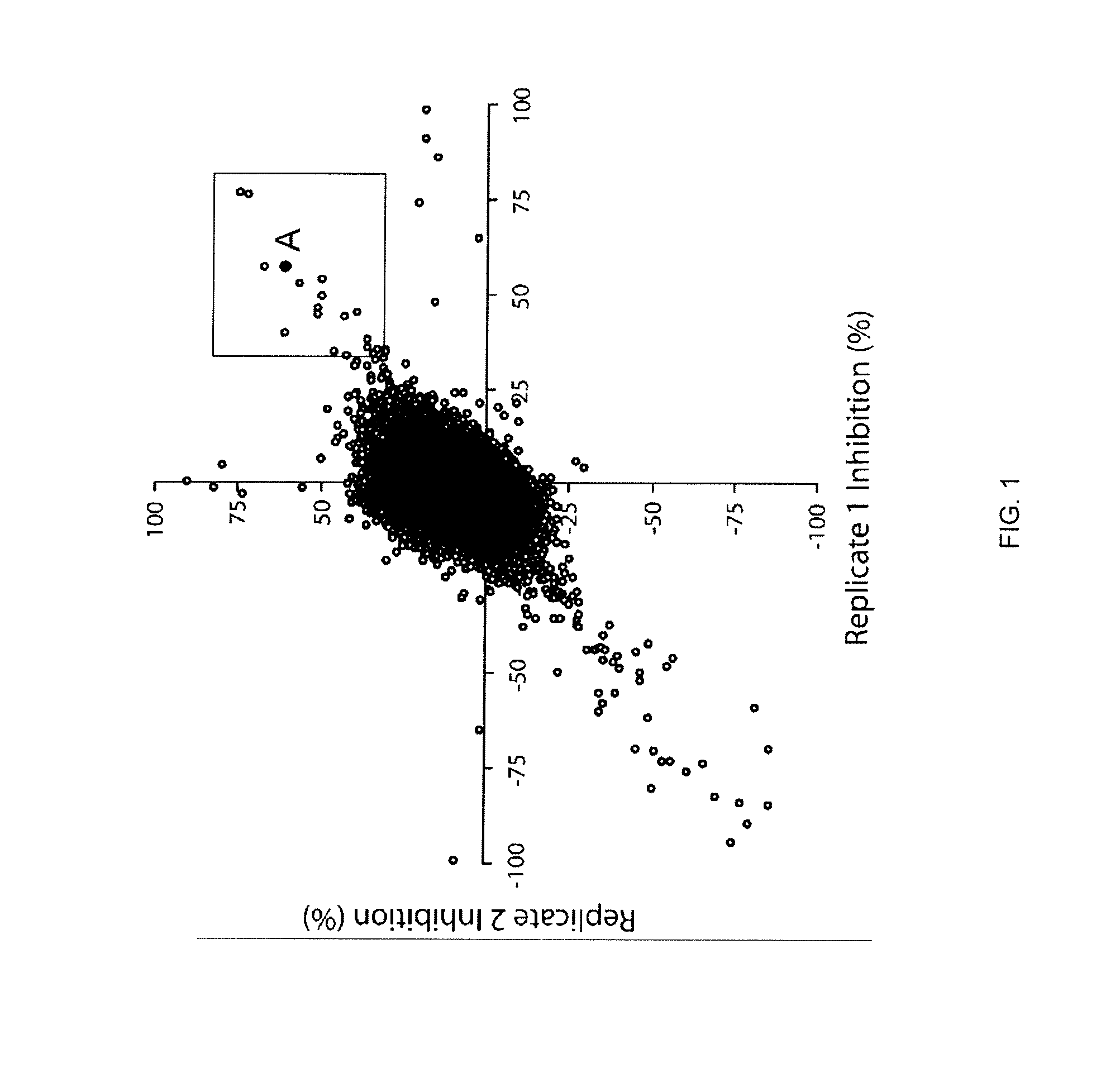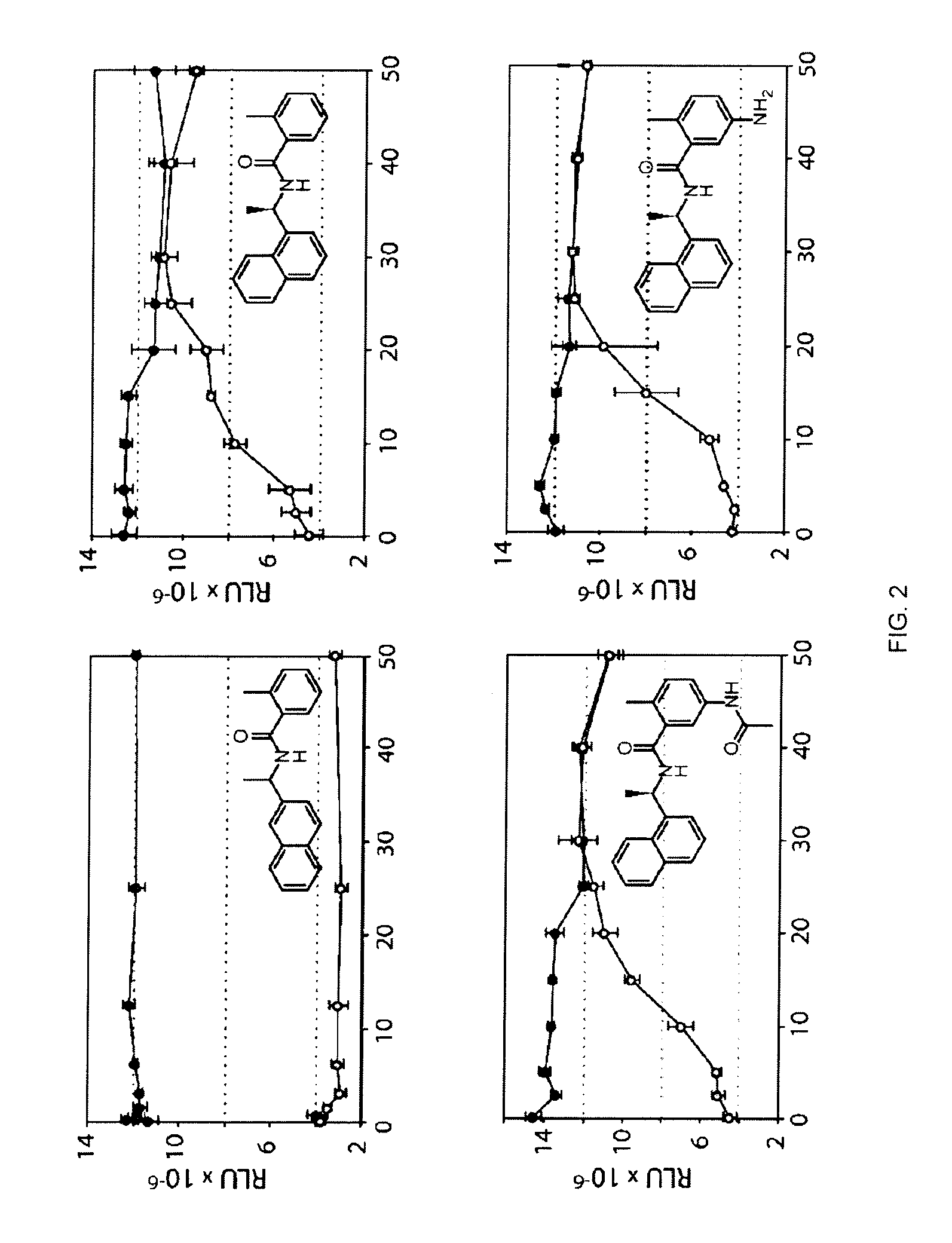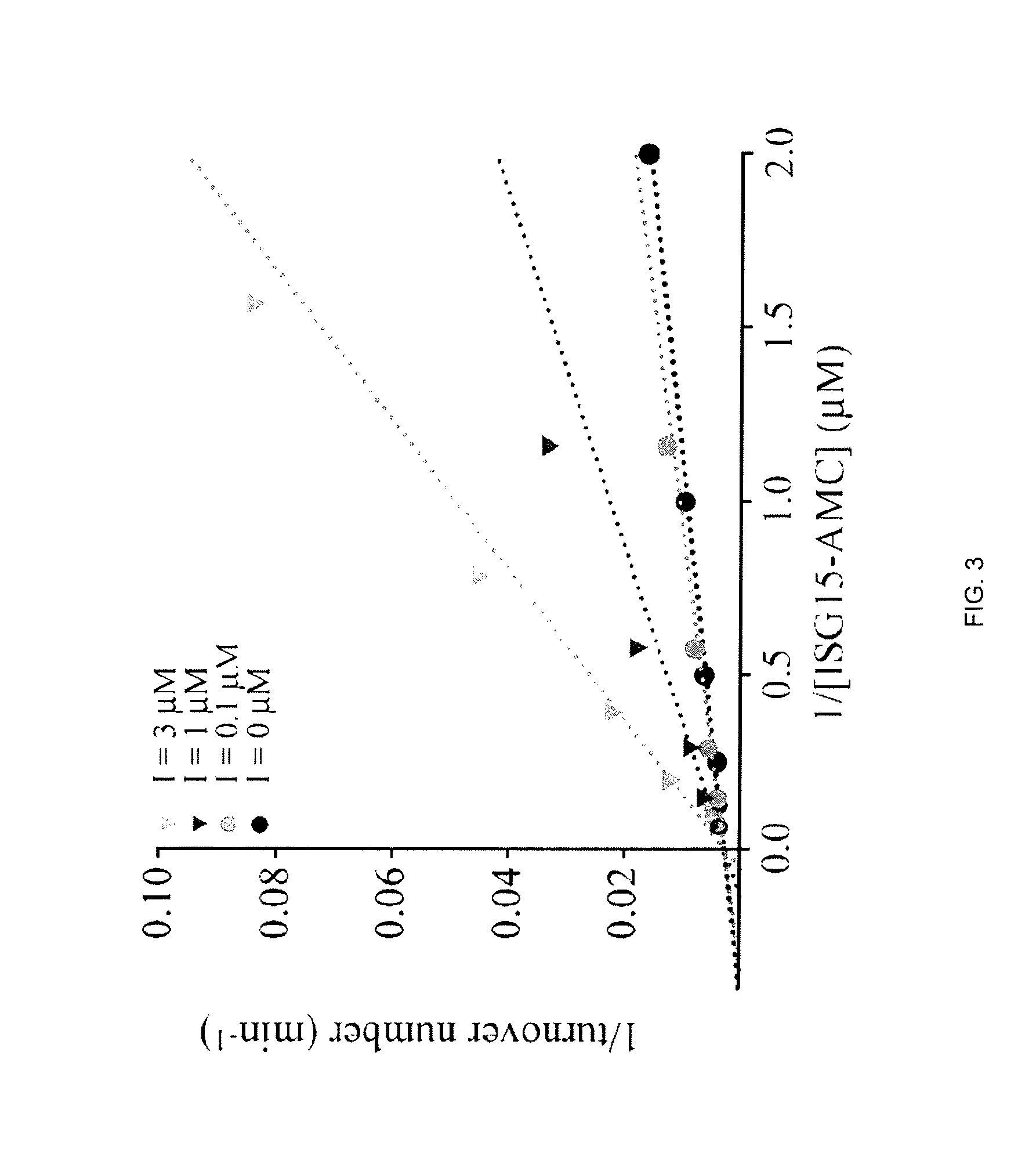Compounds and methods for treating respiratory diseases
- Summary
- Abstract
- Description
- Claims
- Application Information
AI Technical Summary
Benefits of technology
Problems solved by technology
Method used
Image
Examples
examples
[0199]The general procedure for amide coupling is demonstrated by the following example.
[0200]2-Methyl-N—[(R)-1-(1-naphthyl)ethyl]benzamide (5h). To a solution of o-toluic acid (16.2 mg, 0.12 mmol), N-(3-dimethylaminopropyl)-N0-ethylcarbodiimide hydrochloride (EDCI) (29.1 mg, 0.15 mmol), and 1-hydroxybenzotriazole hydrate (HOBT) (20.5 mg, 0.15 mmol) in dry CH2Cl2was added a solution of (R)-(+)-1-(1-naphthyl)ethylamine 18 (20 mg, 0.12 mmol) and diisopropylethylamine (81.4 μL, 0.47 mmol) in dry CH2Cl2 at 0° C. under argon atmosphere and it was allowed to stir for 15 h at 23° C. The reaction mixture was quenched with water and extracted with CH2Cl2. The organic layers were dried over Na2SO4 and concentrated under reduced pressure. The residue was purified by silica gel column chromatography to furnish compound 51 (33 mg, 98%) as a white solid, Rf=0.34 (hexane:EtOAc=3:1), [α]20D−50.0 (c=1, CHCl3). 1HNMR (400 MHz, CDCl3): δ 8.24 (d, 1H, J=8.5 Hz), 7.89 (d, 1H, J=8.0 Hz), 7.82 (d, 1H, J=8...
example
[0247]5-Methylamino-2-methyl-N—[(R)-1-(1-naphthyl)ethyl]benzamide (2). The title compound was obtained as described for compound 9 in 56% yield (white solid). Rf=0.11 (CH2Cl2: MeOH=9:1). 1HNMR (400 MHz, CDCl3 plus a small amount of CD3OD): δ 8.14 (d, 1H, J=8.5 Hz), 7.78 (d, 1H, J=8.0 Hz), 7.69 (d, 1H, J=8.2 Hz), 7.52 (d, 1H, J=7.1 Hz), 7.47-7.34 (m, 3H), 7.16-7.15 (m, 2H), 7.06 (d, 1H, J=8.2 Hz), 5.93 (q, 1H, J=6.8 Hz), 3.61 (s, 2H), 2.21 (s, 3H), 1.59 (d, 3H, J=6.8 Hz). 13C NMR (100 MHz, CDCl3 plus a small amount of CD3OD): δ 172.0, 140.9, 140.3, 138.1, 135.5, 135.3, 132.4, 131.9, 129.9, 130.0, 129.0, 127.3, 127.1, 126.7, 126.5, 124.3, 123.7, 46.3, 46.0, 21.4, 19.3. MS (EI): m / z 318.30 [M]+. HRMS (EI), calcd for C21H22N2O 318.1732, found [M]+ 318.1734.
PUM
| Property | Measurement | Unit |
|---|---|---|
| Mass | aaaaa | aaaaa |
| Mass | aaaaa | aaaaa |
| Molar density | aaaaa | aaaaa |
Abstract
Description
Claims
Application Information
 Login to View More
Login to View More - R&D
- Intellectual Property
- Life Sciences
- Materials
- Tech Scout
- Unparalleled Data Quality
- Higher Quality Content
- 60% Fewer Hallucinations
Browse by: Latest US Patents, China's latest patents, Technical Efficacy Thesaurus, Application Domain, Technology Topic, Popular Technical Reports.
© 2025 PatSnap. All rights reserved.Legal|Privacy policy|Modern Slavery Act Transparency Statement|Sitemap|About US| Contact US: help@patsnap.com



